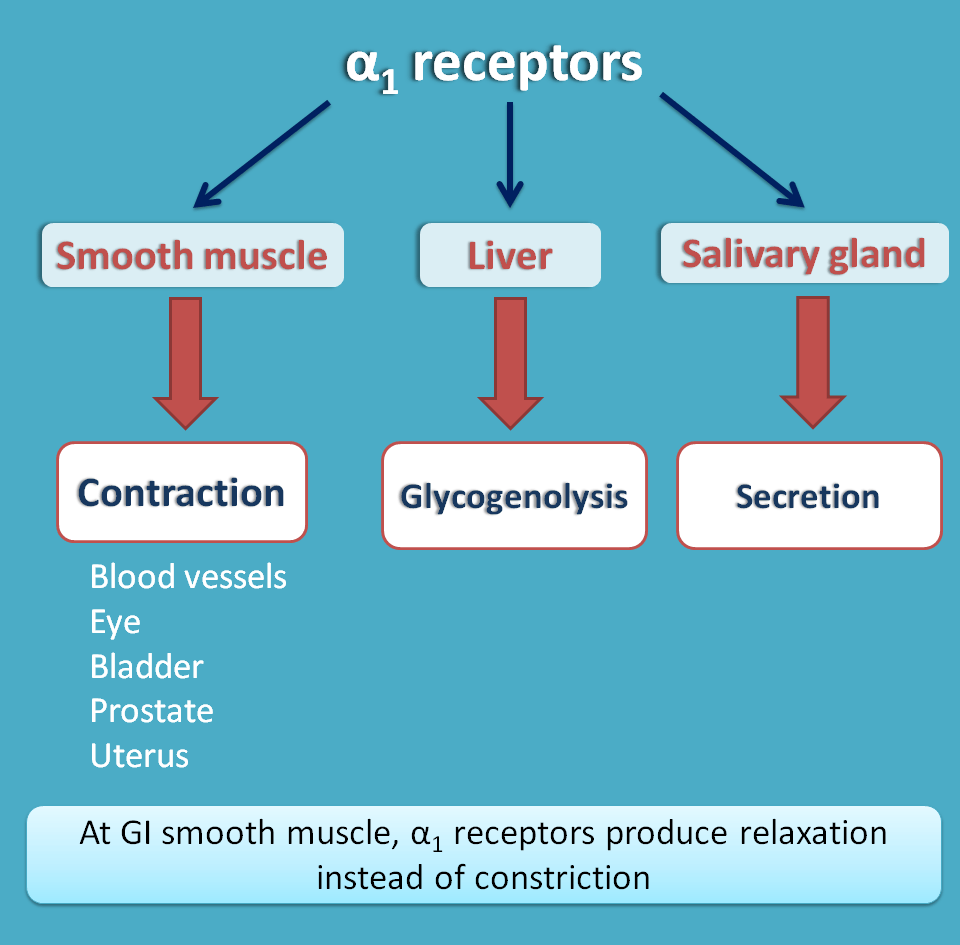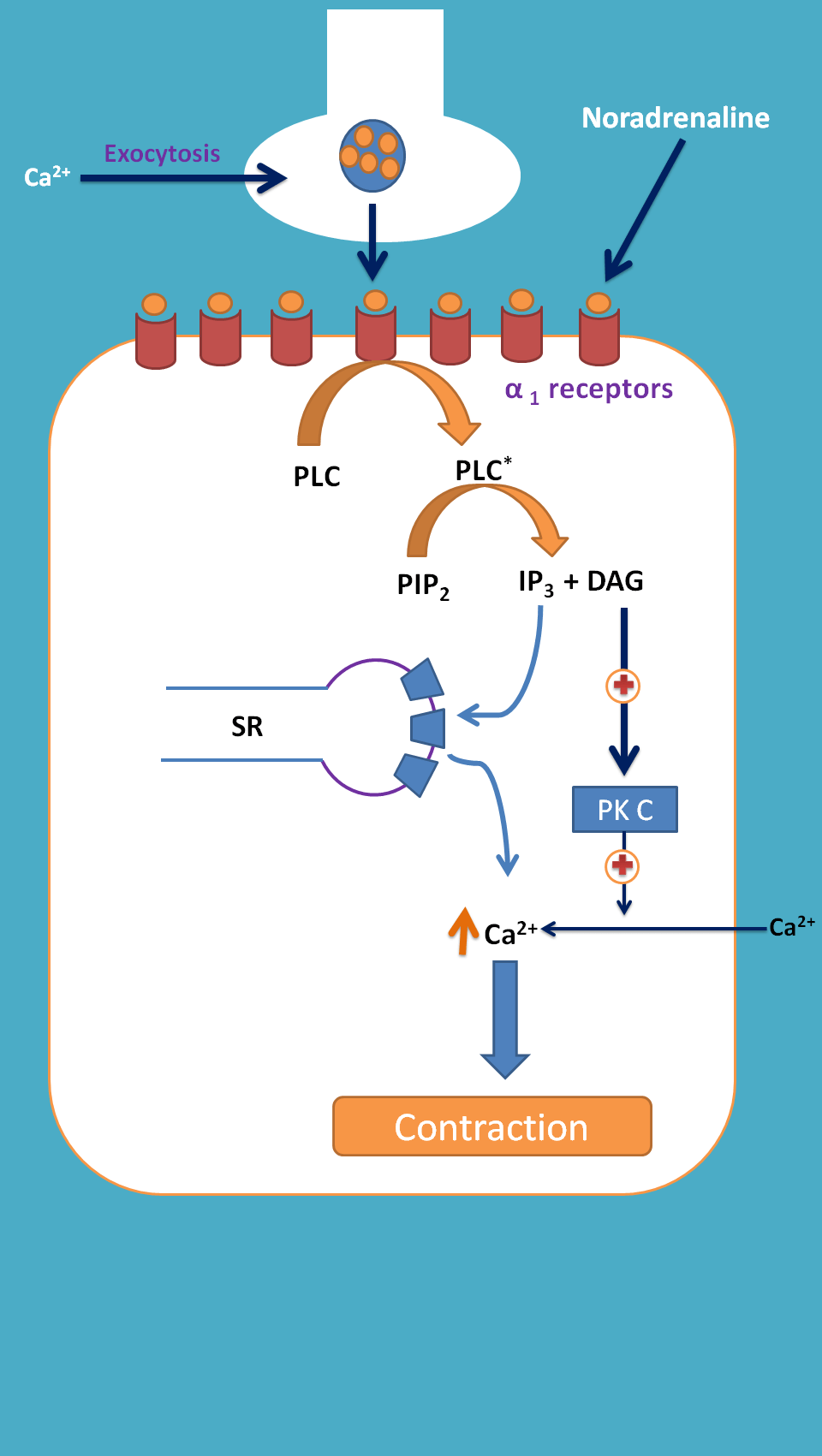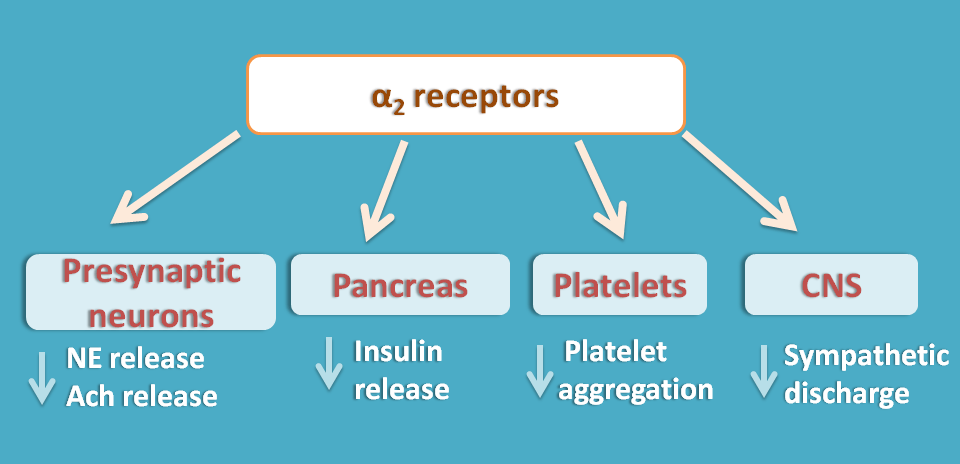Alpha adrenergic receptors
We have already discussed that alpha receptors are further sub classified into α1 and α2. Here we will discuss the location and function of these receptors.
α1–Adrenergic receptors
Location
Three important locations of α1–adrenergic receptors are
- Smooth muscle
- Glands
- Salivary gland
- Liver

These receptors are present at various smooth muscles like
- Vascular smooth muscle
- Eye
- Bladder
- Prostate
- Uterus
- GI smooth muscle
Apart from smooth muscle, these receptors are also present on salivary glands and liver responsible for secretion and glycogenolysis respectively.
Function
They are G-protein coupled receptors of Gq type coupled with activation of phospholipase C. This activated phospholipase C then cleaves phosphatidylinositol biphosphate into two secondary messengers
- Inositol triphosphate (IP3)
- Diacyl glycerol (DAG)
IP3 is responsible for release of calcium from sarcoplasmic reticulum by acting on IP3 receptors.
DAG is responsible for increased calcium entry into the smooth muscle.

In this way, both IP3 and DAG are responsible for increased intracellular calcium leading to contraction of the smooth muscle.
Exception at GI smooth muscle
The α1 receptors at GI smooth muscle are again G-protein coupled receptors but not coupled with IP3/DAG instead coupled with opening of potassium channels leading to hyperpolarisation. Hence α1 receptors produce relaxation of GI smooth muscle decreasing motility.

In summary we can conclude α1 actions as
- All smooth muscles are contracted except GI smooth muscle
- Secretion of salvia
- Glycogenolysis in liver
α2 adrenergic receptors
Location
α2 receptors are mainly present as presynaptic at
- adrenergic neurons
- cholinergic neurons
- Beta cells of pancreas
They also present at
- Platelets
- CNS

Function
α2 adrenergic receptors are again G-protein coupled receptors coupled with inactivation of adenylyl cyclase. This results in decreased release of cAMP hence intracellular calcium. As calcium levels fall, the release of neurotransmitter from nerve terminal by exocytosis is inhibited.
At adrenergic neurons they play important role as auto inhibitory feedback mechanisms controlling norepinephrine release. At platelets they inhibit platelet aggregation and within the CNS they decrease central sympathetic discharge.